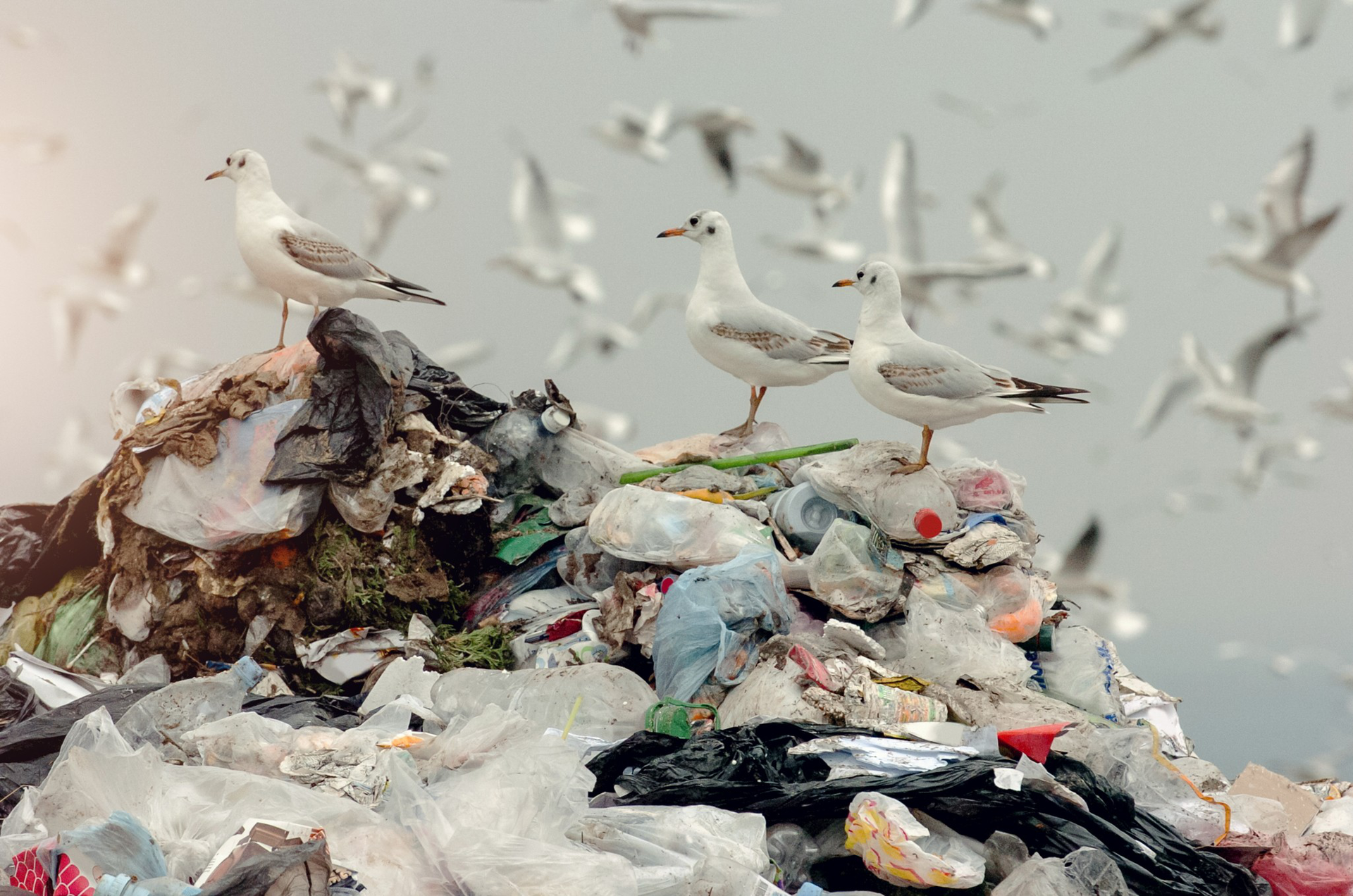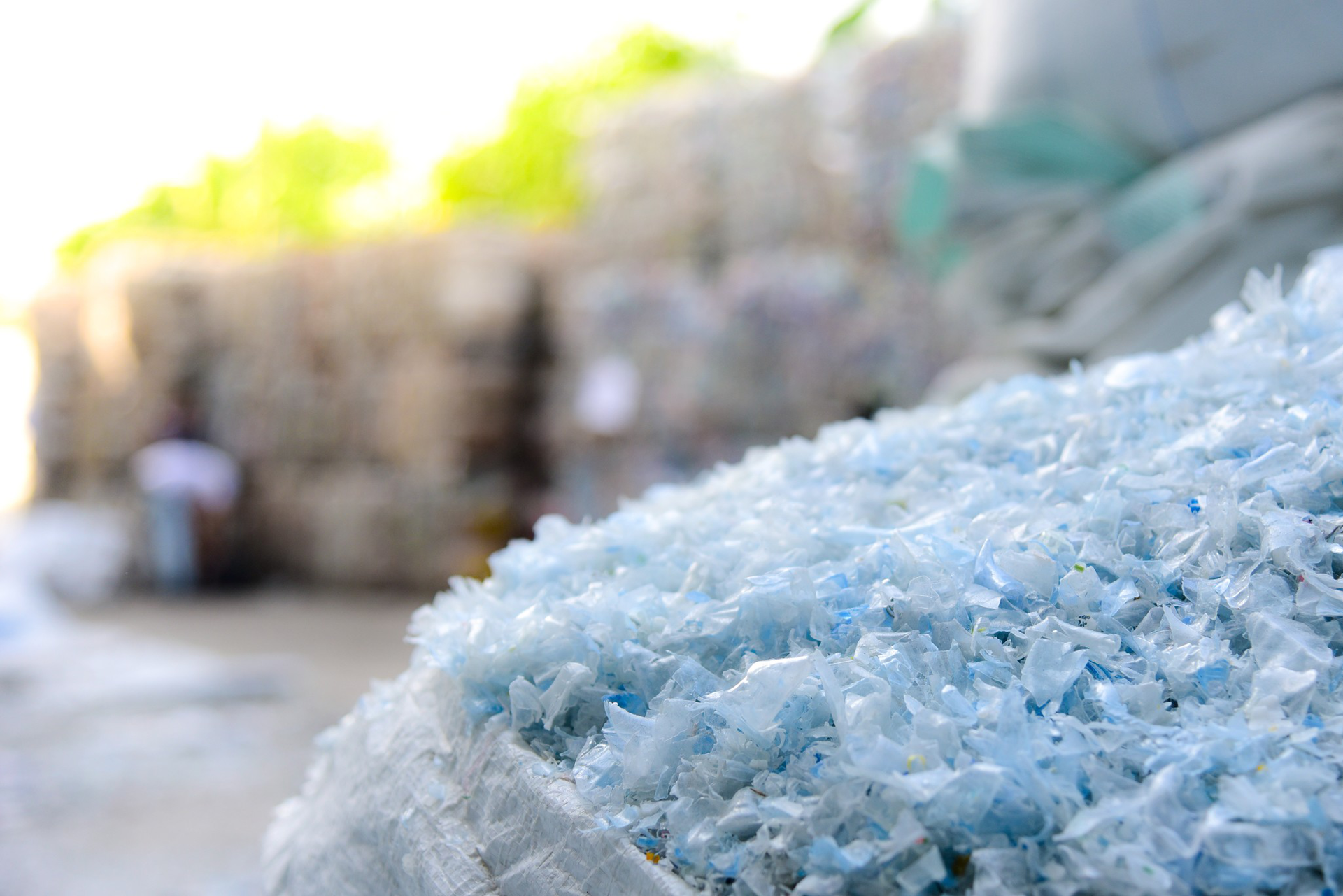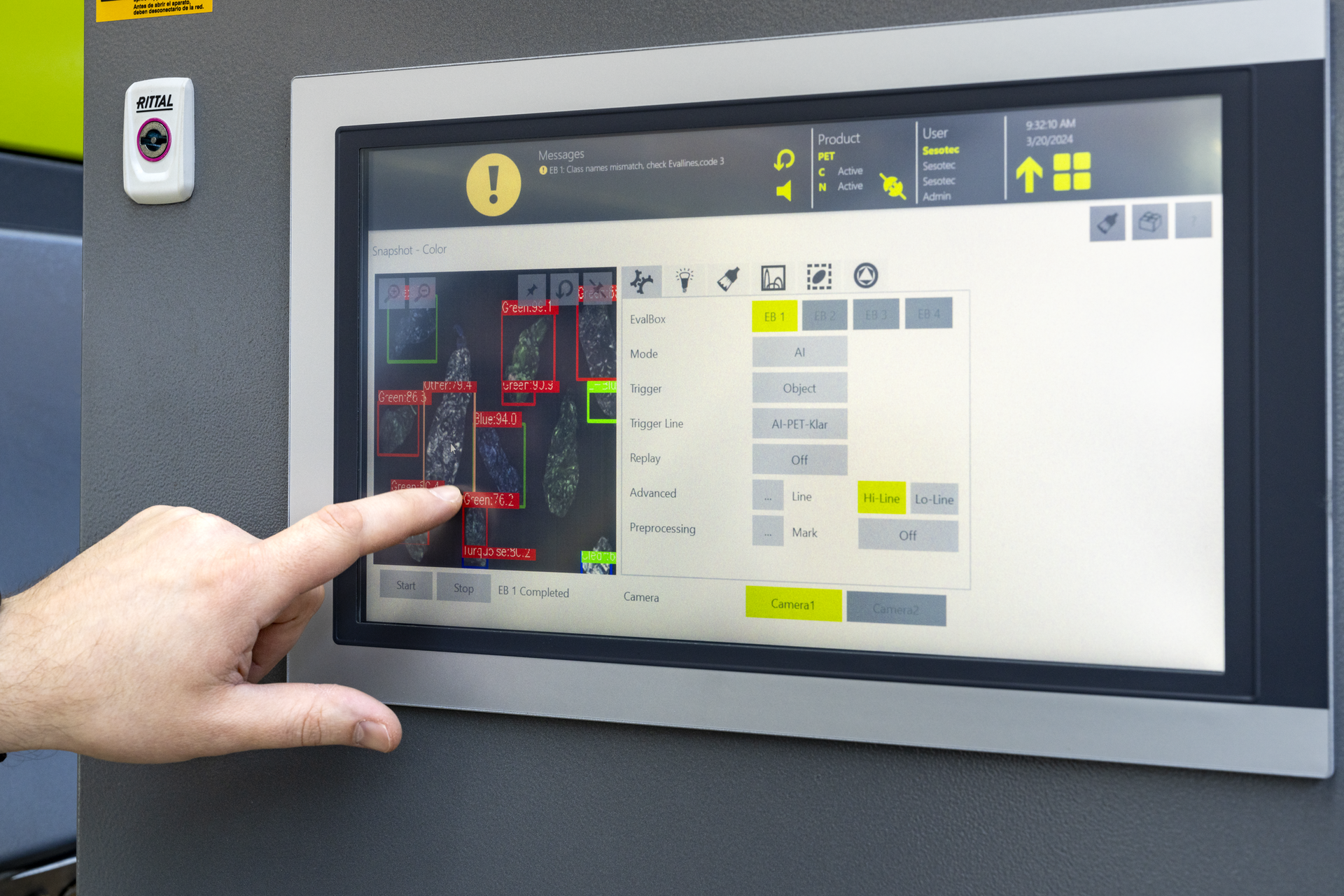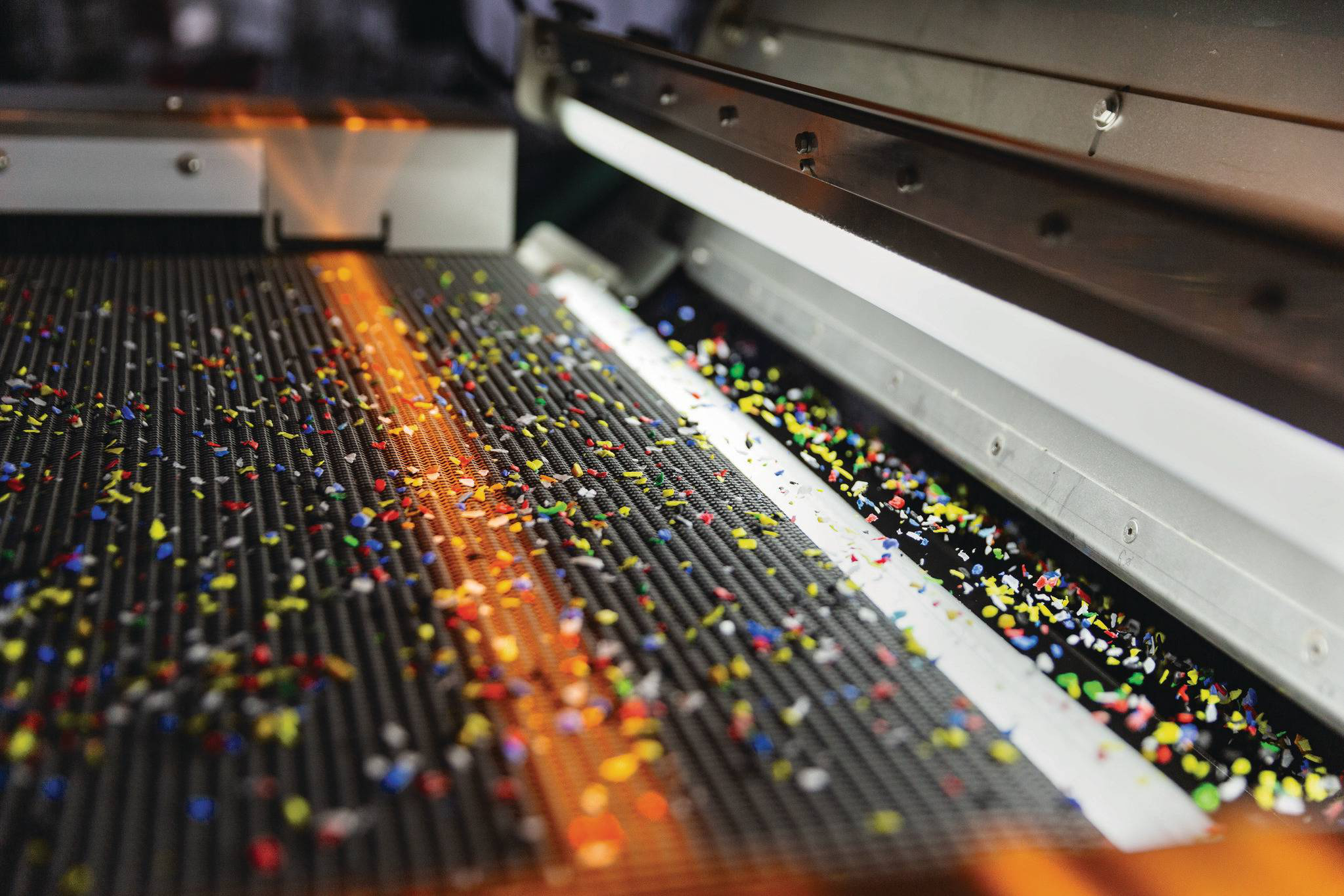The advantages of the circular economy are obvious, as recycling protects the environment and saves raw materials. However, the system can only leverage its benefits if recycling companies can operate profitably.
Recyklate – that's what the key material of the recycling industry is called. But what exactly lies behind it? The word is an appropriation and refers to substances produced in the recycling process. Recyklates come in various forms – for example, as grindings, regranulate, or regenerate. Grindings are obtained by grinding plastic. It is called regranulate when granules are produced from the grindings with the help of a melting process. Regenerate is also produced through a melting process. However, to improve the properties of the material, additives are added. Unlike grindings, regenerate and regranulate have a uniform grain size and contain no dust.
How is recycled material produced?
The raw materials for recyclate can be found in many things that others throw away – for example bottles, boxes, or plastic cups. The recycling companies process these residual substances according to a precisely coordinated procedure. The resulting recyclate is mixed with the raw materials for new products – or the new products are made entirely from recyclate. These can be packaging, but also textiles or furniture.

Quality of the recyclate is important
For these high-quality products, special quality recycled material is required, with which higher prices can also be achieved. To obtain as much high-quality plastic as possible, recycling companies first need a large amount of recyclable material. To achieve that, functioning collection systems such as the "Yellow Bin" are necessary. According to the Association Plasticseurope, more than eight million tonnes of used plastics were collected in this way in Europe in 2016.
Plastic waste: It's all about the quantity
The larger the amount of collected plastic, the higher the proportion of material that can be used to manufacture high-quality products. For the recycler, it is also important that, in addition to the quantity, the type, composition, and quality of the material are suitable.

Room for improvement in recycling
The amount of recycled plastic available in Europe could be greater. Only about one third of the plastic consumed on the continent is recycled. The rest ends up in landfills or is incinerated.
Moreover, the collected plastic waste often does not consist of what was intended. Household waste can be found in between, but also metal parts. An investigation, according to the online portal Plastverarbeiter, has shown that the allowable contaminant level was exceeded in 80 percent of all samples. Although everything that cannot be recycled can be sorted out with the appropriate technology, this means increased effort. In addition, the remaining residues must be disposed of – which, once again, costs the recyclers money.
Composition and type of packaging are important
The type of packaging that is discarded can also complicate recycling. For example, unlike clear bottles, black bottles can only be sorted with increased effort. Their remnants can hardly be reused because manufacturers desire transparent granulate from which they can produce a much wider range of products.
The composition of the packaging is also important. Beverage pouches made of composite materials increase the effort required for recycling. Sometimes they consist of firmly bonded connections of several types of plastic, some layers are made of paper, but fillers such as chalk can also be found.

Recycling – also a question of profitability
When manufacturers decide whether to use recycled material or new plastic made from petroleum, they naturally consider costs as well as quality. Recyclers therefore rely on modern technology because they must produce the recycled material profitably in order to offer it at competitive prices. In terms of quality and price, the recycled material has to measure up to new material.
The profitability of the recycled material depends on several variables. First, the incoming material must be of the highest possible quality. The better it is, the more economically the sorting process can be carried out. That means lower process costs, which in turn increases profitability.
The recycling process takes place in multiple stages: first, a shredder breaks down the waste; then a strong air current removes everything that is not needed – for example, films, styrofoam, or textile remnants. The leftover plastic is ground, washed, separated by density, and finally dried and melted.
Only when the recycler knows from the outset how quickly and in what quantities he must process can he plan his facilities optimally and calculate which modules he needs to sort, wash, shred the waste, or decide whether an extrusion unit is advisable. All modules must be coordinated so that a recycled material of good quality is produced that is competitive, and the entire manufacturing process remains profitable.
Flexible Process Technology in Recycling
Only in theory does the recycler have a stable supply of raw material in consistent quality available. If this were the case in practice, he could acquire the appropriate plant and would always be fully utilized. In reality, however, the type and quantity of delivered recycled plastic vary greatly. Therefore, it is important for companies to equip their plants with flexible technology. They must be able to detect various materials and contaminants – this applies to both the current and future design of plastic packaging and products.
But the sorting processes must also be flexible and respond to fluctuations in the quality and quantity of the incoming material. Through a coordinated and well-thought-out arrangement and combination of the sorting systems, both the quality and output of the respective plastic can be increased, thereby enhancing profitability.

Higher recycling rate thanks to intelligent technology
To further increase the recycling rate and make processing more profitable, the industry relies on innovations. According to the bvse-Fachverband Kunststoffrecycling, only 12.3 percent of new plastic products are made from recyclate. The reason for the reluctance is not a lack of willingness on the part of manufacturers, but uncertainty. They often know too little about the recyclates and the plastics contained in them. Materials melt at different temperatures, while others have varying load capacities. That is why many manufacturers still stick to the time-tested raw materials from petroleum, even though the trend is moving towards greater use of recyclate under pressure from customers and the public.
With intelligent technology, this problem may soon be solved. It is conceivable that sensors will in future analyze the quality of processed plastics already during production. Software could evaluate the data and make it available to the industry on a digital platform.

More recycling, less waste – the environment also benefits
Indirectly, consumer desires also factor into the calculations of recyclers. They are becoming more environmentally conscious and increasingly demand products with a high recycled content. Through this trend, the demand for recyclate could increase, which in turn would lead to higher prices and thus higher profitability.
However, well-thought-out recycling is not only a gain for companies. It also benefits the environment. Not only because plastic waste pollutes landscapes and seas worldwide. The production and incineration of plastic also produce the greenhouse gas CO2, which is partly responsible for global warming. Recycling plastics in the circular economy therefore benefits not only the recycling industry and consumers, but also the environment – and lays the foundation for a sustainably oriented economy.

